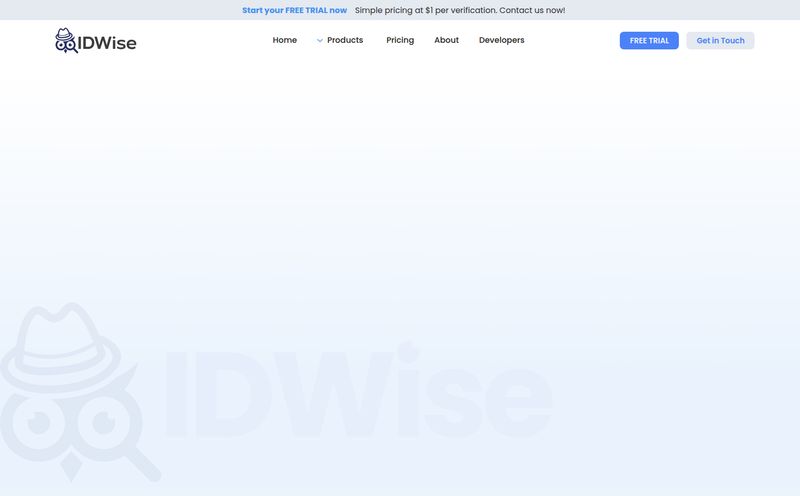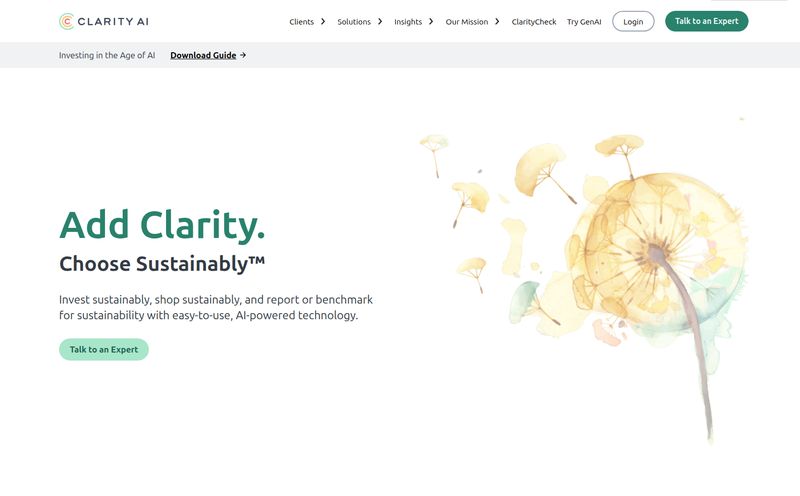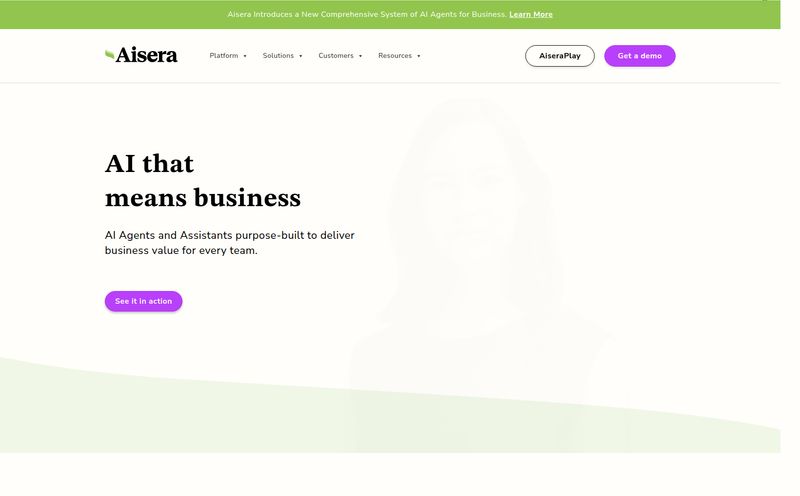If you've ever worked on a film, TV show, or even a large-scale event, you know the special kind of chaos that is production finance. It's a world of crumpled receipts stuffed in pockets, frantic petty cash runs, and spreadsheets so complex they could make a NASA engineer weep. I've been there, trying to reconcile a shoebox of receipts from the art department while the line producer is breathing down my neck about being over budget. It’s… a lot.
So, when I see a tool that claims to be the "fastest Card and AP solution in the industry," my cynical little blogger heart skips a beat. The tool in question is called Backdrop. And when I saw their homepage littered with logos from the likes of A24, HBO, and Village Roadshow, I knew I had to take a closer look. If it's good enough for the people who made Everything Everywhere All at Once, it's gotta have something going for it, right?
So, What Exactly is Backdrop?
At first glance, you might think Backdrop is just another expense tracking app. But that's like saying a Steadicam is just a tripod. It's so much more. Backdrop is a full-blown financial command center designed specifically for the weird, wonderful, and project-based world of production. Think of it as a single platform where you can issue p-cards to your crew, manage those pesky petty cash envelopes, create and approve purchase orders, and pay all your vendors, from the caterer to the post-production house.
It’s built to take the grunt work out of production accounting. Instead of juggling five different apps, a physical card holder, and a mountain of paperwork, the idea is to bring it all under one digital roof. A single source of truth for every dollar spent. A beautiful concept, if they can pull it off.

Visit Backdrop
The Features That Actually Move the Needle
A platform is only as good as its features. So what’s under the hood? I snooped around their site, and a few things really stood out as being genuinely useful for a frantic production environment.
P-Cards and Petty Cash, Finally Modernized
This is a big one. The ability to instantly issue virtual and physical p-cards (purchase cards) is a game-changer. Need to get your PA a card to do a last-minute prop run? Done. In seconds. No more sketchy cash handoffs or asking people to use their personal cards and wait for reimbursement. And it’s not just cards; they tackle the age-old headache of petty cash. Backdrop lets you manage it digitally, tracking every dollar without the actual physical envelope getting lost in a truck somewhere.
Goodbye, Shoebox of Receipts
Backdrop's homepage has this simple, glorious promise: "Snap a receipt, and we handle the rest for you!" As someone who has spent literal days deciphering faded, illegible receipts, this is music to my ears. The crew just snaps a photo of the receipt with their phone, and the system automates the processing and reconciliation. This means you can add receipts in minutes, not weeks. It transforms expense reporting from a wrap-week nightmare into a real-time, ongoing process. This alone could save a production accountant's sanity.
Streamlining Vendor Payments and POs
Getting vendors paid on time is crucial. Backdrop integrates accounts payable (AP) directly into the platform. You can upload invoices, manage vendors, and even reimburse your crew all from the same place—and the site claims you can do it without ever having to log into your main bank account. Add in the ability to create, route, and approve Purchase Orders, and you have a system that connects the intention to spend with the actual spending. It’s about creating an unbroken chain of financial data, which is the holy grail for any accountant.
Keeping the Studio Execs Happy
At the end of the day, it all comes down to the budget. The real magic of an all-in-one system like this is the real-time visibility. Because every card swipe, every receipt, and every invoice lives in one place, producers and execs can see exactly where the money is going, as it's being spent. No more waiting for the weekly cost report to find out the SFX department went way over on fake blood. With bank integration and instant notifications, you can stay on top of your budget proactively, not reactively.
My Honest Take: The Good and The... Quirks
Okay, so it sounds great on paper. But what's the reality? I think of it like this: a great tool should feel like a seasoned First AD for your finances—organized, efficient, and always one step ahead. From what I see, Backdrop is pretty close to that.
The all-in-one approach is, in my opinion, its biggest strength. The production world is already fragmented enough; the last thing you need is a separate app for cards, another for receipts and another for paying vendors. Having one system simplifies training and gives you a much clearer picture of your financial health. The focus on real-time data is also massive. It's the difference between navigating with a live GPS and using a folded paper map from 1998.
Now, for the quirks. No tool is perfect. The platform requires integration with your existing bank and accounting systems. This isn't a flaw, just a fact of life for any serious financial software. Expect some setup time. There’s also likely a bit of a learning curve. Powerful tools often require a bit of training to master, and getting a whole crew onboarded will take some coordination. It's an investment of time upfront to save a ton of time later.
So, How Much Does Backdrop Cost?
Ah, the million-dollar question. Or, hopefully, a lot less than that. Here's where things get a bit mysterious. The pricing isn't listed on their website. In fact, the link that looked like it might lead to a pricing page just gave me a '404 Page not found' error.
Honestly? I'm not surprised. This is incredibly common for B2B SaaS products targeting a specific, high-value industry. The cost for a small indie feature will be vastly different from a massive HBO series. They likely operate on a "request a demo" and custom quote basis. You'll need to talk to their sales team, tell them about your production's scale, and they'll build a package for you. So while I can't give you a number, I can tell you to expect a tailored pricing model rather than a simple three-tiered monthly subscription.
Who is This Really For?
This isn't for your cousin's YouTube channel (unless it has a massive budget). Backdrop is built for the pros. We're talking about:
- Production Accountants
- Line Producers
- Unit Production Managers (UPMs)
- Studio Executives
- Anyone responsible for a budget on a professional film, television, commercial, or live event production.
If you're currently trying to manage a production's finances using a messy combination of Quickbooks, Expensify, and a whole lot of prayer, Backdrop is designed to be your upgrade.
Frequently Asked Questions about Backdrop
Can I use Backdrop for a small indie film?
Probably! While they showcase big names, the core problems of expense tracking and paying vendors exist at every level. Your best bet is to contact them for a demo. They might have scalable solutions for smaller, independent projects.
Is Backdrop a replacement for my accountant?
No, and it's not trying to be. Think of it as a powerful tool for your accountant. It automates the tedious data collection and organization, freeing up your accountant to focus on more strategic work like tax incentives, cash flow analysis, and final cost reporting.
How does the receipt scanning work? Is it accurate?
Most modern receipt scanning apps use OCR (Optical Character Recognition) technology to pull data like the vendor name, date, and amount. It's generally very accurate, but it’s always good practice to have a quick human review, which is far faster than manual data entry.
Does it integrate with major accounting software?
While their site doesn't list specific integrations, any serious platform in this space is built to play nice with industry-standard software like QuickBooks, Xero, or more specialized production accounting systems. This would be a key question to ask during a demo.
What's the difference between a virtual and a physical p-card?
A physical card is a normal plastic card you can hold. A virtual card is a unique 16-digit card number, CVV, and expiry date that exists only digitally. It's perfect for online purchases or for assigning a specific card to a specific vendor for better tracking and security.
Is there a mobile app?
Yes, the ability for crew to snap receipts and track expenses on the go is a core part of the value proposition. It's accessible on both mobile and web.
The Final Verdict on Backdrop
Look, the world of production will always have a bit of controlled chaos. That's part of its charm. But your finances don't have to be. From everything I've seen, Backdrop looks like a seriously impressive tool that directly tackles the most persistent financial pain points in the entertainment industry.
It’s not a magic wand. It will require some setup and buy-in from your team. But by consolidating p-cards, petty cash, expenses, and vendor payments into one real-time system, it has the potential to save productions an incredible amount of time, money, and sanity. If you're tired of chasing paper and want a clearer view of your budget, I'd say signing up for their free trial is a very smart move.



